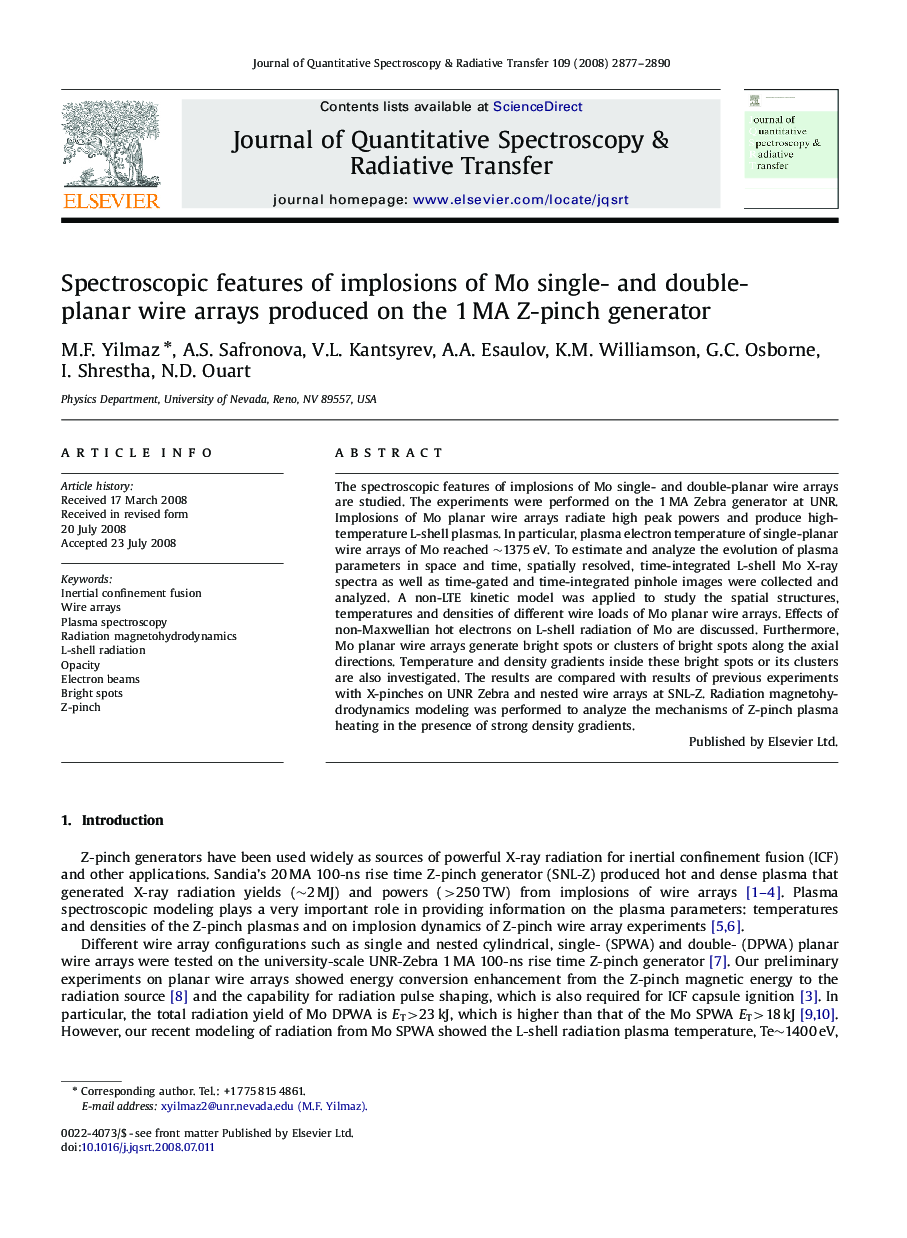| Article ID | Journal | Published Year | Pages | File Type |
|---|---|---|---|---|
| 5430414 | Journal of Quantitative Spectroscopy and Radiative Transfer | 2008 | 14 Pages |
The spectroscopic features of implosions of Mo single- and double-planar wire arrays are studied. The experiments were performed on the 1Â MA Zebra generator at UNR. Implosions of Mo planar wire arrays radiate high peak powers and produce high-temperature L-shell plasmas. In particular, plasma electron temperature of single-planar wire arrays of Mo reached â¼1375Â eV. To estimate and analyze the evolution of plasma parameters in space and time, spatially resolved, time-integrated L-shell Mo X-ray spectra as well as time-gated and time-integrated pinhole images were collected and analyzed. A non-LTE kinetic model was applied to study the spatial structures, temperatures and densities of different wire loads of Mo planar wire arrays. Effects of non-Maxwellian hot electrons on L-shell radiation of Mo are discussed. Furthermore, Mo planar wire arrays generate bright spots or clusters of bright spots along the axial directions. Temperature and density gradients inside these bright spots or its clusters are also investigated. The results are compared with results of previous experiments with X-pinches on UNR Zebra and nested wire arrays at SNL-Z. Radiation magnetohydrodynamics modeling was performed to analyze the mechanisms of Z-pinch plasma heating in the presence of strong density gradients.
